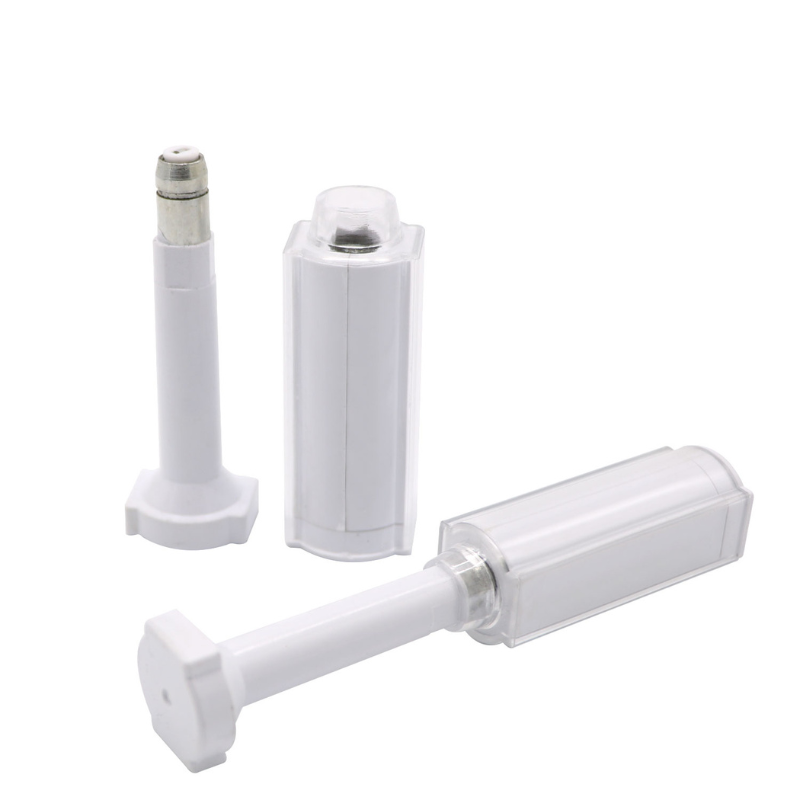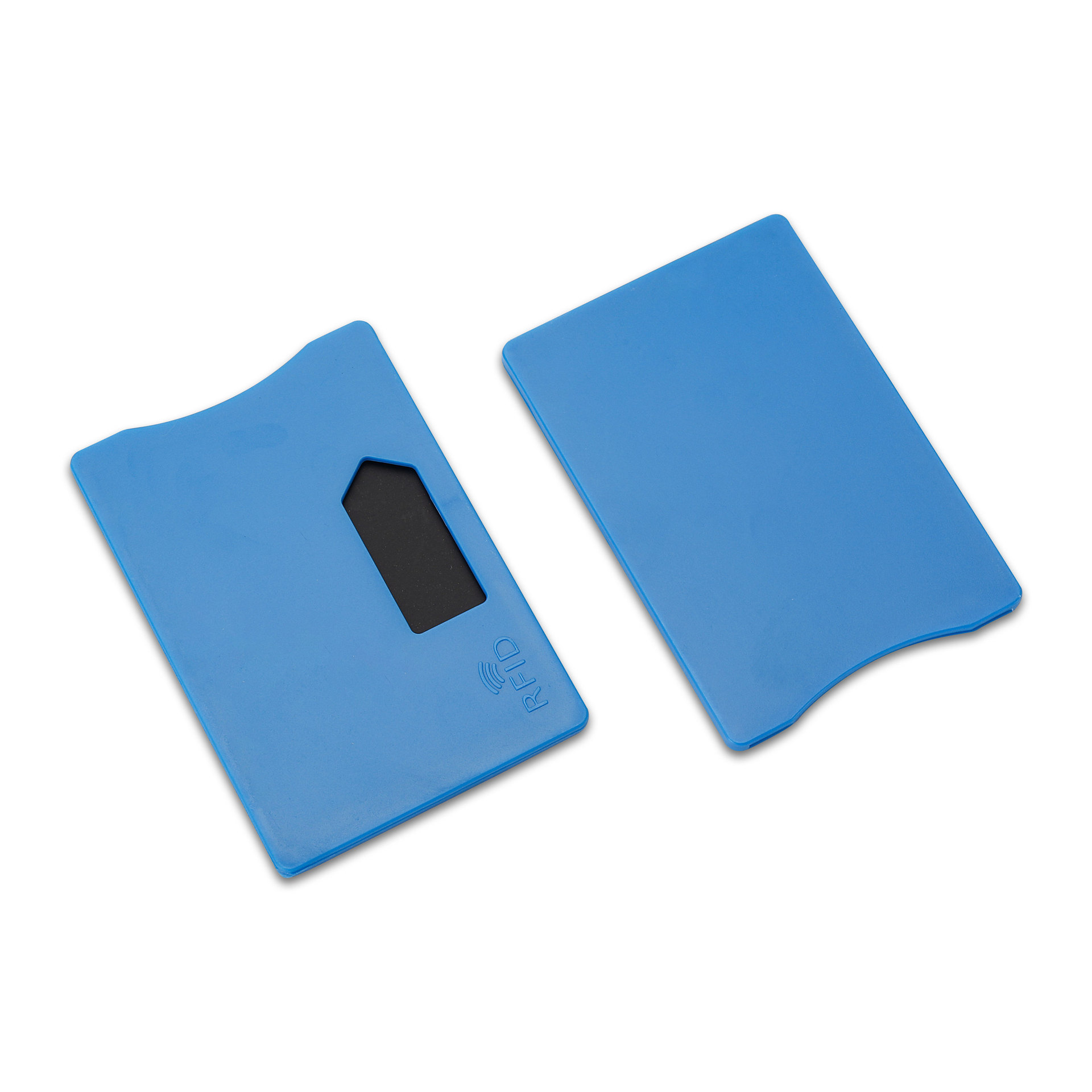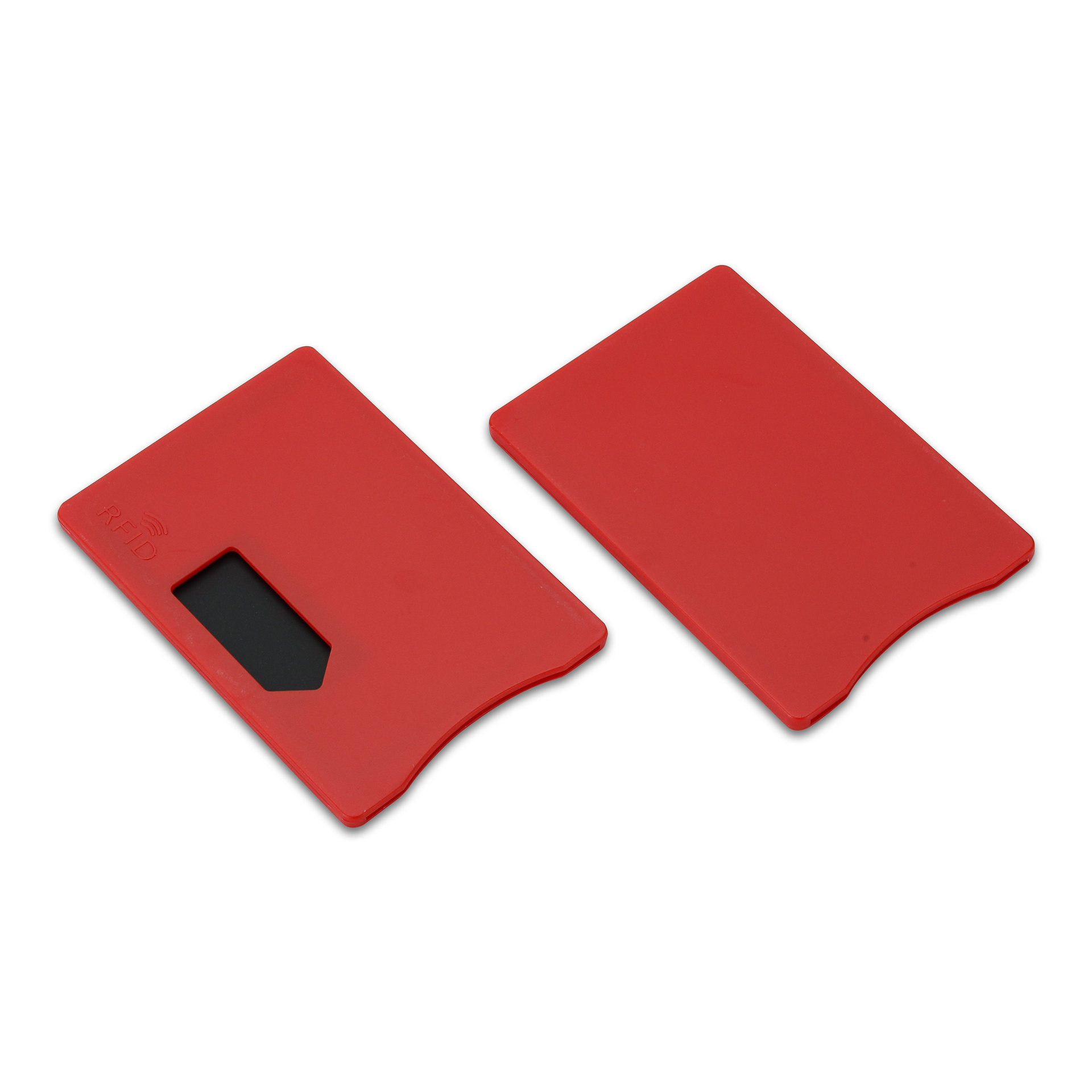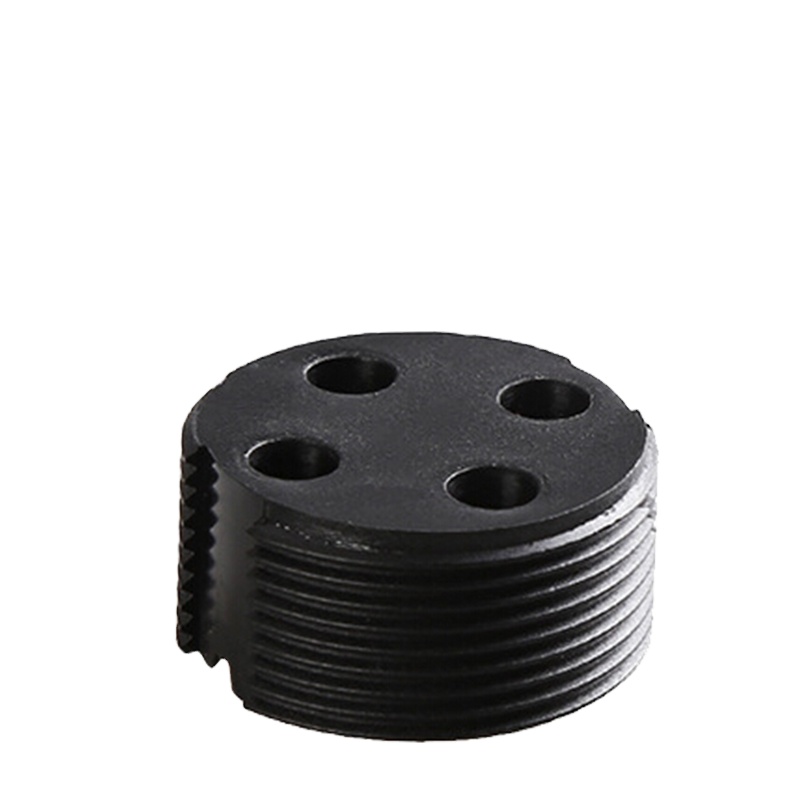
Was ist der Unterschied zwischen NFC und RFID?
Inhaltsverzeichnis
NFC und RFID: Wesentliche Unterschiede, Anwendungsbereiche und Auswahlkriterien (Leitfaden 2025)
Von der Bestandsverfolgung bis hin zu kontaktlosen Zahlungen – diese drahtlosen Kommunikationsmethoden helfen Branchen dabei, Prozesse zu automatisieren, Fehler zu reduzieren und die Sicherheit zu erhöhen.
Dieser Leitfaden erläutert die Unterschiede zwischen RFID und NFC, ihre Funktionsweise, ihre Anwendungsbereiche und welche Technologie im Jahr 2025 am besten zu Ihren Anforderungen passt.
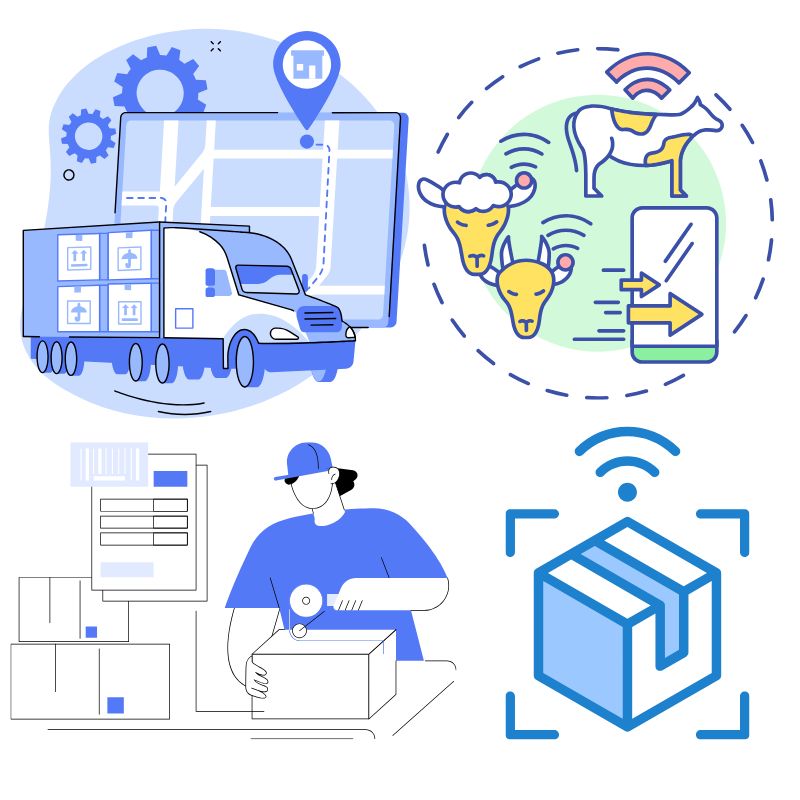
Was sind RFID und NFC?
RFID (Radiofrequenz-Identifikation)
RFID nutzt Funkwellen, um Objekte mithilfe von RFID-Tags und RFID-Lesegeräten automatisch zu identifizieren und zu verfolgen. Es wird häufig in Branchen wie Logistik, Einzelhandel, Fertigung und Gesundheitswesen eingesetzt, um Vermögenswerte zu verfolgen und Lieferkettenabläufe zu optimieren.
- Frequenzbänder: Niedrig (LF), Hoch (HF) und Ultrahoch (UHF)
- Lesereichweite: Bis zu 100 Meter (aktive Tags)
- Tags: Passiv (ohne Batterie) oder Aktiv (batteriebetrieben)
- Anwendungsfälle: Bestandsverwaltung, Anlagenverfolgung, Zugangskontrolle
NFC (Nahfeldkommunikation)
NFC ist eine spezielle Untergruppe der RFID-Technologie, die mit einer Frequenz von 13,56 MHz (HF) arbeitet. Im Gegensatz zur allgemeinen RFID-Technologie ermöglicht NFC eine bidirektionale Kommunikation zwischen Geräten in sehr geringer Entfernung – in der Regel unter 4 cm. Sie wird häufig für den sicheren und schnellen Datenaustausch verwendet, beispielsweise für mobile Zahlungen oder digitale Visitenkarten.
- Frequenzband: Hochfrequenz (13,56 MHz)
- Reichweite: Innerhalb weniger Zentimeter
- Interaktivität: Unterstützt bidirektionale Kommunikation
- Anwendungsfälle: Kontaktloses Bezahlen, Smartphone-Kopplung, öffentlicher Nahverkehr
NFC vs. RFID: Was ist der Unterschied?
Der Unterschied zwischen RFID und NFC liegt in der Reichweite, Interaktivität, Leistung und den Anwendungsbereichen. Hier eine kurze Vergleichstabelle:
| Besonderheit | RFID | NFC |
|---|---|---|
| Frequenzband | LF, HF, UHF | HF (13,56 MHz) |
| Lesebereich | Bis zu 100 Meter | Innerhalb weniger Zentimeter |
| Kommunikation | Einweg (meistens) | Zweiwege |
| Stromquelle | Passiv oder aktiv | Typischerweise passiv |
| Anwendungen | Bestand, Lieferkette, Zugangskontrolle | Mobile Zahlungen, Datenaustausch |
| Interaktivität | Niedrig | Hoch (Interaktion zwischen Benutzer und Gerät) |
- “RFID eignet sich ideal für die großflächige Nachverfolgung von Vermögenswerten, während NFC für sichere Interaktionen über kurze Entfernungen wie mobile Zahlungen konzipiert ist.”
So funktioniert die RFID-Technologie
Ein RFID-System basiert auf drei Kernkomponenten:
- RFID-Tags: Speichern Artikelinformationen (können schreibgeschützt oder lesbar/beschreibbar sein).
- RFID-Lesegerät: Sendet ein Signal aus, um passive Tags mit Strom zu versorgen und Daten abzurufen.
- Softwaresystem: Interpretiert und verwaltet gesammelte Daten.
Arten von RFID-Tags
- Passive RFID-Tags: Keine interne Batterie, wird durch das Signal des RFID-Lesegeräts mit Strom versorgt.
- Aktive RFID-Tags: Verfügen über eine eigene Stromquelle für eine größere Reichweite und häufige Datenaktualisierungen.
RFID- und NFC-Lesegeräte sind je nach Anwendung als Handheld- oder stationäre Geräte erhältlich.
Wie NFC funktioniert
Die NFC-Technologie ermöglicht die Nahbereichskommunikation zwischen zwei NFC-fähigen Geräten oder einem Gerät und einem NFC-Tag.
Vorteile von NFC:
- Einfach per Fingertipp: Kein Koppeln oder Scannen erforderlich.
- Hohe Sicherheit: Ideal für kontaktlose Finanztransaktionen.
- Zwei-Wege-Kommunikation: Im Gegensatz zu den meisten RFID-Systemen können Daten in beide Richtungen fließen.
NFC- und RFID-Lesegeräte werden zunehmend in Smartphones, POS-Terminals und Transit-Gates integriert, um schnelle, zuverlässige und sichere Interaktionen zu ermöglichen.
Anwendungen von RFID
RFID und NFC ermöglichen beide vielfältige Anwendungen, aber aufgrund seiner großen Reichweite und Flexibilität eignet sich RFID ideal für:
Bestandsverwaltung
- Echtzeit-Updates
- Automatisierte Nachverfolgung über Lager hinweg
Anlagenverfolgung
- Medizinische Geräte, Instrumente oder Fahrzeuge überwachen
- Steigern Sie die Effizienz in Logistik und Gesundheitswesen
Zugriffskontrolle
- Verwenden Sie RFID-Schlüsselkarten, -Anhänger oder -Ausweise.
- Zugangskontrolle zur Sicherung von Gebäuden oder Bereichen
Anwendungen von NFC
Die sicheren und kurzreichweitigen Funktionen von NFC kommen in privaten und öffentlichen Anwendungen besonders gut zur Geltung:
Mobile Zahlungen
- Apple Pay, Google Pay, Samsung Pay.
- Sichere Transaktionen in Sekundenschnelle.
Intelligente Geräte & Marketing
- Tippen Sie, um Apps zu starten oder Kontaktdaten zu teilen.
- Smart Tags für Produktinformationen oder Check-ins.
Transportsysteme
- Kontaktlose Transitkarten.
- Einfaches Einsteigen in U-Bahn- und Busnetze.
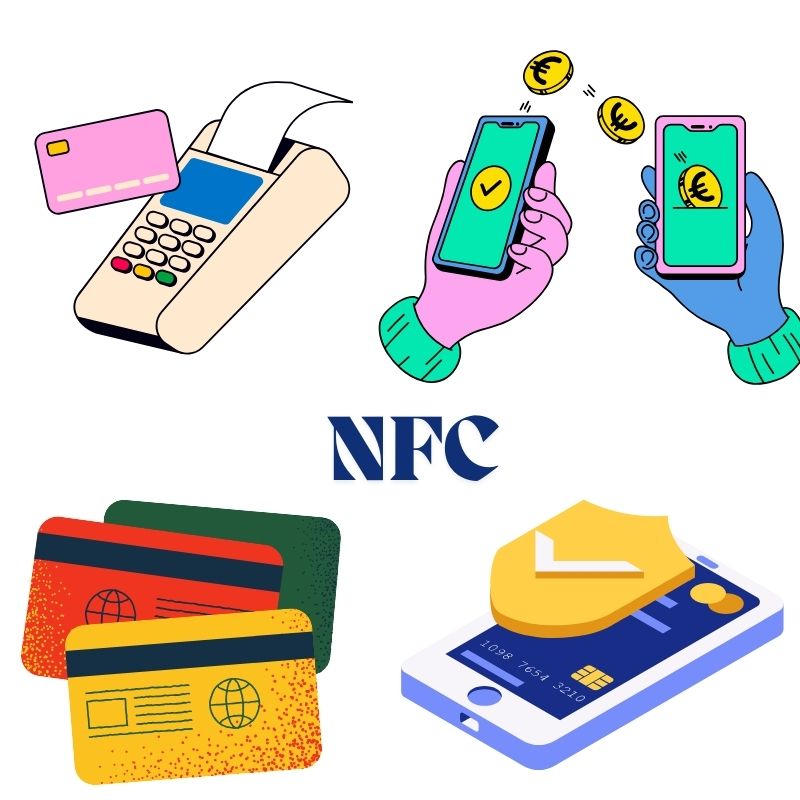
NFC vs. RFID: Was sollten Sie verwenden?
| Anwendungsfall | Beste Technologie |
|---|---|
| Tracking über große Entfernungen | RFID |
| Lagerbestand oder Lieferkettenbetrieb | RFID |
| Sichere, persönliche Transaktionen | NFC |
| Mobile Zahlungen & Identifizierung | NFC |
| IoT-gestützte intelligente Automatisierung | Beide |
Wenn Sie Tausende von Assets verwalten, ist RFID die richtige Wahl. Für individuelle, sichere Interaktionen – wie das Antippen Ihres Telefons – ist NFC die klare Wahl.
NFC und RFID im IoT (Internet der Dinge)
RFID und NFC sind grundlegend für IoT-Ökosysteme, da sie es physischen Objekten ermöglichen, mit digitalen Systemen zu “kommunizieren”.
- RFID im IoTÜberwacht Waren entlang der Lieferketten und in den Fertigungsbereichen.
- NFC im IoTErmöglicht sicheres Koppeln von Geräten, Zugriff auf das Smart Home und Echtzeitsteuerung über Smartphones.
“Die Kombination aus NFC- und RFID-Tags verändert das IoT, indem sie physische Vermögenswerte mit der Cloud verbindet.”
Die Rolle der Frequenz für die Leistung von NFC und RFID
Das Verständnis der Frequenz hilft bei der Auswahl des richtigen Systems:
- LF (125–134 kHz) – Kurze Reichweite, wird in der Zugangskontrolle verwendet
- HF (13,56 MHz) – Wird sowohl von RFID als auch von NFC verwendet
- UHF (860-960 MHz) – Große Reichweite, ideal für Lieferketten
Jede Frequenz unterstützt unterschiedliche Reichweiten und Lesegeschwindigkeiten, weshalb die Auswahl des RFID- und NFC-Lesegeräts für die Systemleistung von großer Bedeutung ist.
Häufig gestellte Fragen zu NFC und RFID
Was ist der Hauptunterschied zwischen RFID und NFC?
NFC ist eine Untergruppe von RFID. Während RFID eine größere Reichweite und Einwegkommunikation unterstützt, ist NFC für Zweiweg-Interaktionen mit kurzer Reichweite ausgelegt.
Können NFC- und RFID-Tags austauschbar verwendet werden?
Nicht immer. NFC funktioniert nur mit HF, während RFID LF, HF oder UHF verwenden kann. NFC-Tags funktionieren nur mit NFC-Lesegeräten, nicht mit allen RFID-Lesegeräten.
Sind RFID-Tags sicher?
Passive RFID-Tags können ohne Verschlüsselung anfällig sein. NFC bietet mehr integrierte Sicherheit, insbesondere für Finanztransaktionen.
Was ist ein NFC- und RFID-Lesegerät?
Es handelt sich um ein Gerät zum Lesen von RFID- oder NFC-Tags. Viele moderne Smartphones fungieren als NFC-Lesegeräte für kontaktlose Aktionen.
Wie funktionieren NFC-fähige Zahlungen?
Geräte verwenden NFC, um verschlüsselte Zahlungsinformationen drahtlos an kompatible Terminals zu übertragen – ohne dass ein physischer Kontakt erforderlich ist.
Welche Branchen profitieren am meisten von RFID?
Einzelhandel, Gesundheitswesen, Logistik, Fertigung und Lagerhaltung nutzen RFID für Automatisierung und Transparenz.
Abschließende Überlegungen
Sowohl RFID als auch NFC bieten einen erheblichen Mehrwert – egal, ob Sie Paletten verfolgen oder Zahlungen mit Ihrem Smartphone tätigen. Ihre Wahl sollte sich nach Ihren betrieblichen Anforderungen richten:
- Für eine umfassende, automatisierte Nachverfolgung wählen Sie RFID.
- Für sichere Interaktionen über kurze Entfernungen sollten Sie NFC verwenden.
Da sich RFID- und NFC-Tags mit dem IoT weiterentwickeln, ist jetzt der perfekte Zeitpunkt, sie in Ihren Arbeitsablauf zu integrieren.
Benötigen Sie Hilfe bei der Auswahl des richtigen NFC- oder RFID-Systems für Ihr Unternehmen?
Kontaktieren Sie uns Heute oder entdecken Sie unser komplettes Sortiment an NFC- und RFID-Lesegeräten und -Tags.

Ray Zhou
Dieser Artikel wurde von Ray Zhou verfasst, einem RFID-Technologieexperten mit mehr als 10 Jahren Branchenerfahrung.
Kommentare
heiße Produkte
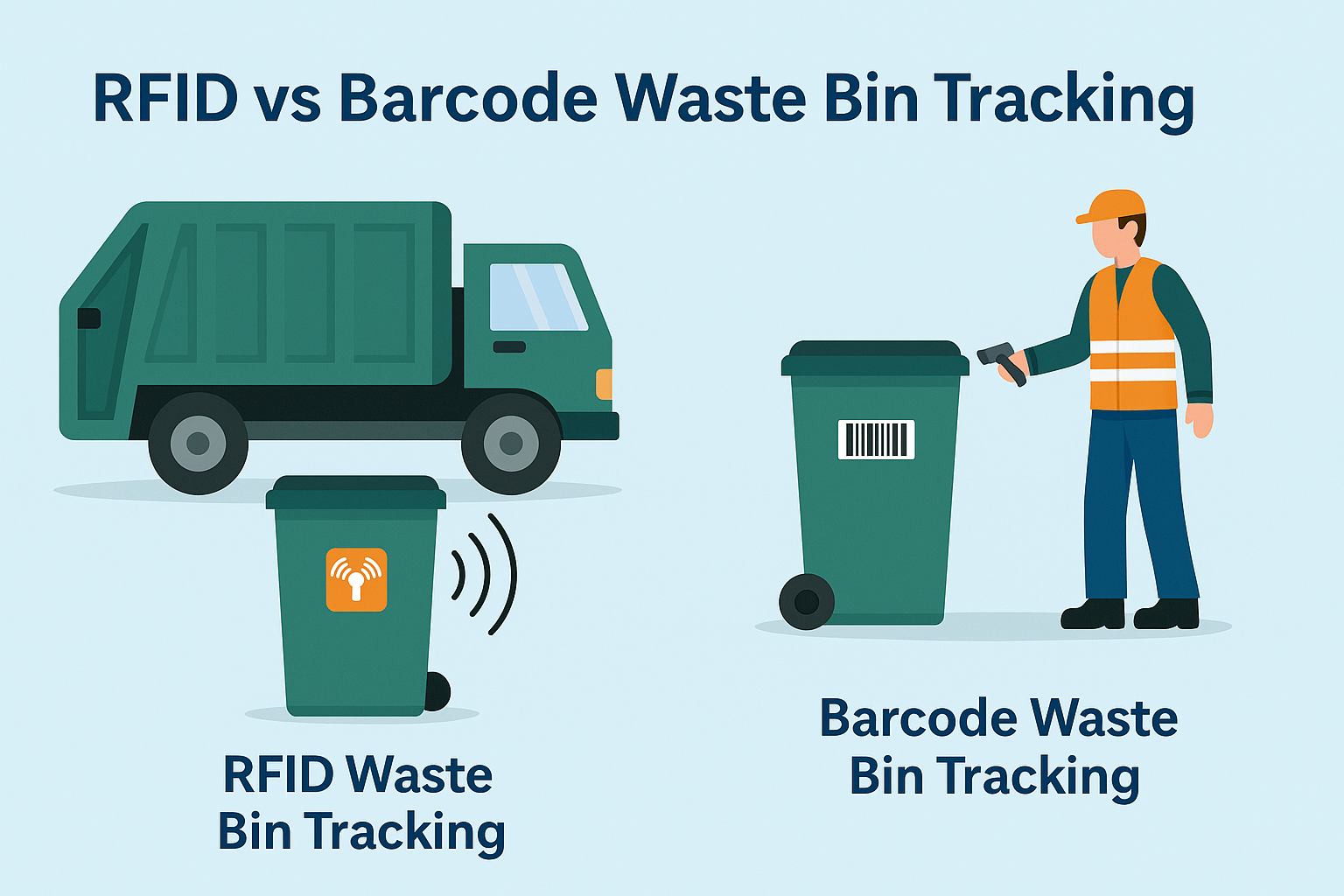
Was ist RFID-Abfallmanagement?
Stellen Sie sich eine Stadt vor, in der jeder Mülleimer spricht – nicht im wörtlichen Sinne, sondern über einen winzigen Chip, der dem System mitteilt, wann er voll ist, wann er geleert wurde und wohin er gebracht wurde. Genau das leistet heute die RFID-Abfallwirtschaft.
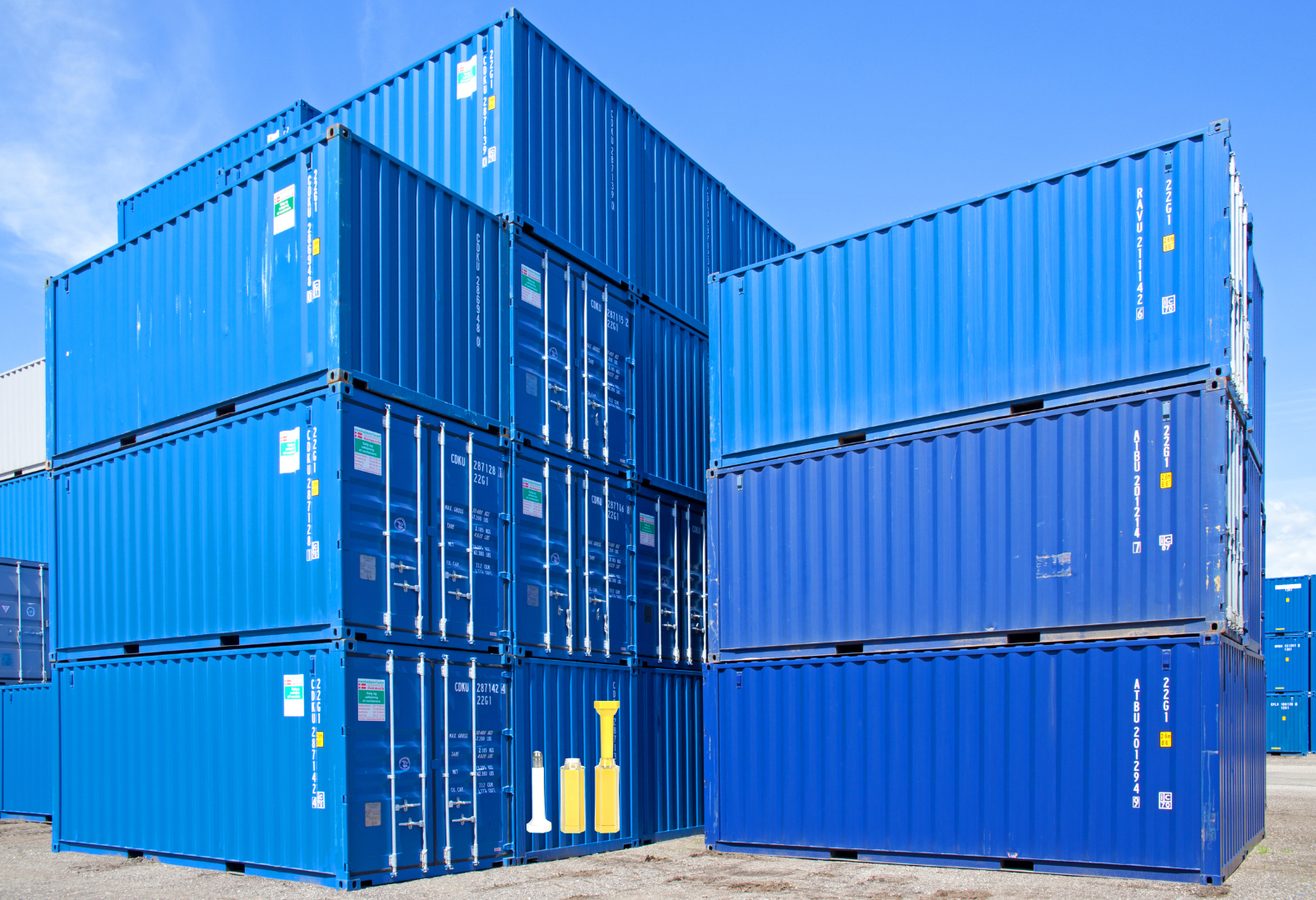
Was sind Schraubendichtungen und ihre Anwendungen? | Vollständiger Leitfaden
Im globalen Handel und in der Logistik spielen Bolzenplomben eine entscheidende Rolle bei der Gewährleistung der Frachtsicherheit und der Einhaltung von Vorschriften. Diese kleinen, aber leistungsstarken Geräte sind so konzipiert, dass sie Schiffscontainer, Anhänger und Frachttüren mit einem manipulationssicheren Mechanismus verriegeln.
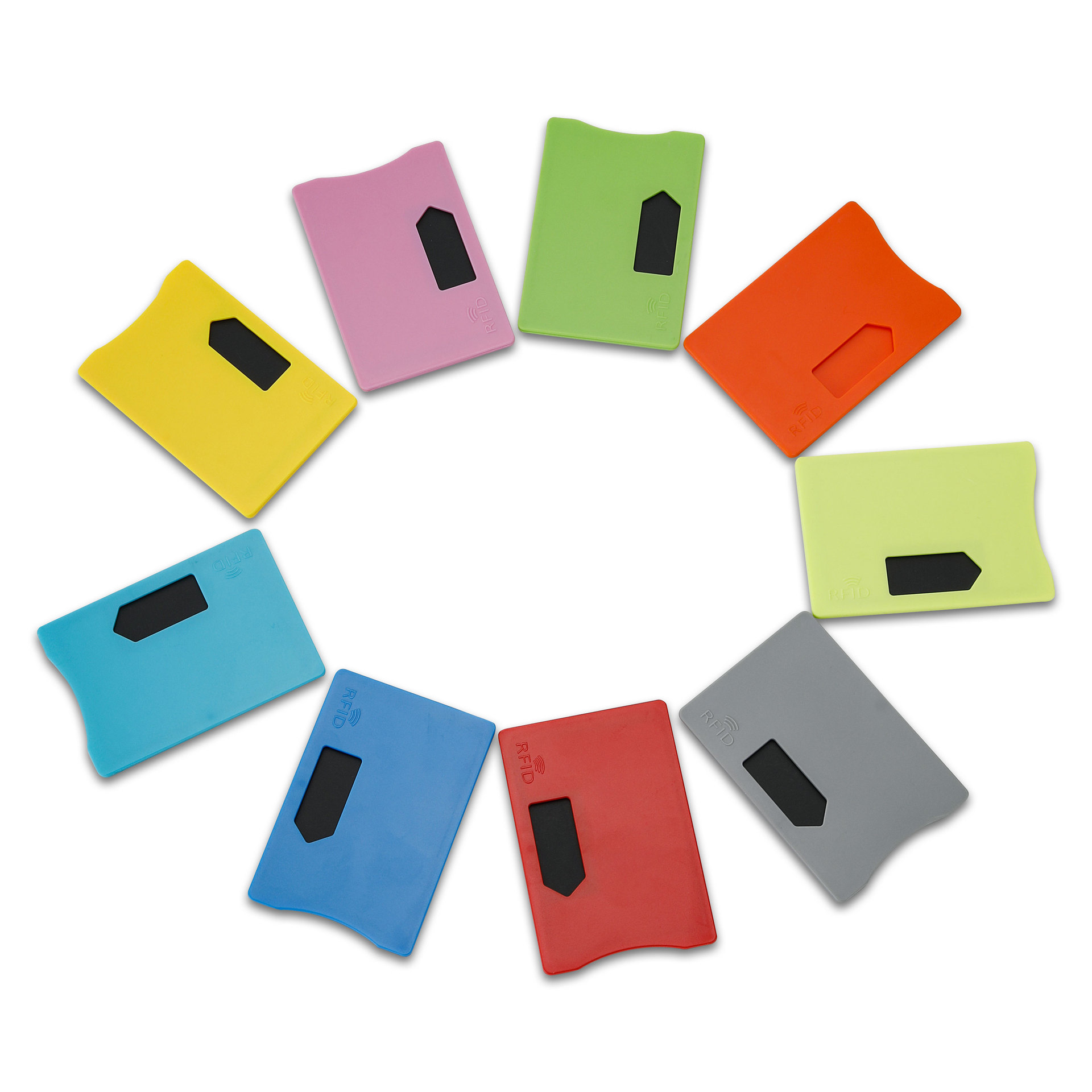
Was ist eine RFID-Kartenschutzhülle? Vorteile, Anwendungsfälle und Kaufberatung
Die RFID-Technologie (Radio Frequency Identification) ist allgegenwärtig: in Ihren Kreditkarten, Ausweisen, Fahrkarten, Hotelzimmerschlüsseln und vielem mehr. Sie bietet Schnelligkeit und Bequemlichkeit, öffnet aber auch die Tür für eine neue Art des digitalen Diebstahls, das sogenannte "Skimming". An dieser Stelle kommt ein RFID-Kartenschutz ins Spiel.

RFID-Armbänder für Veranstaltungen: Großeinkaufsleitfaden für Veranstalter
RFID-Armbänder für Veranstaltungen werden zur bevorzugten Lösung für Organisatoren, die einen schnelleren Einlass, Betrugsprävention und bargeldlose Zahlungen bei Konzerten, Festivals und Sportveranstaltungen benötigen. Im Gegensatz zu Papiertickets oder QR-Codes verwenden diese intelligenten Armbänder eingebettete Chips, um den Zugang zu rationalisieren, Transaktionen zu sichern und das Erlebnis der Gäste zu verbessern.
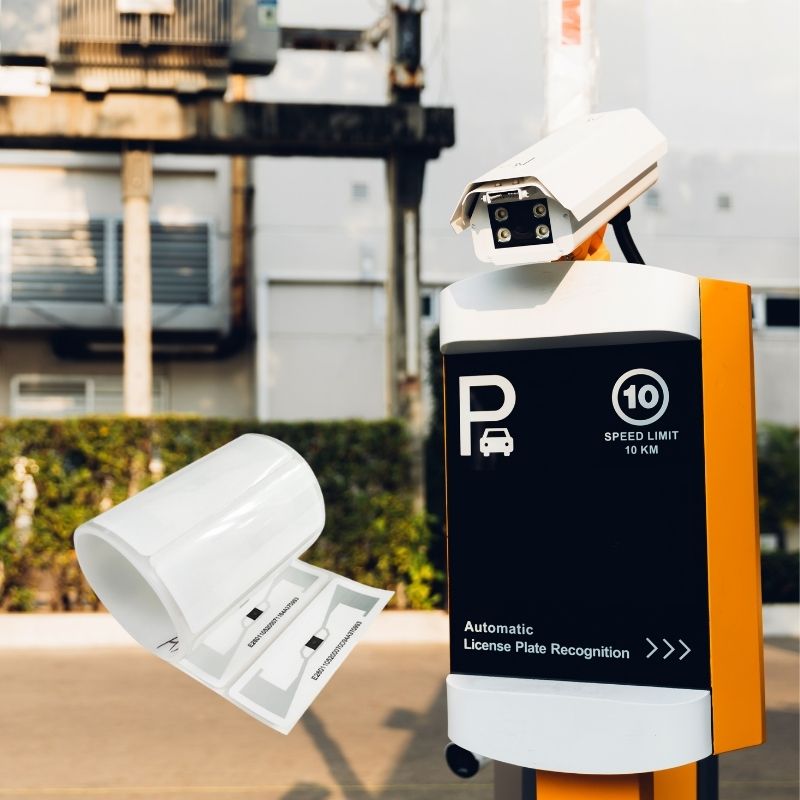
Wie RFID-Etiketten an der Windschutzscheibe die Fahrzeugzugangskontrolle und Mautsysteme verbessern
In der heutigen schnelllebigen Welt muss die Fahrzeugidentifizierung schnell, sicher und berührungslos sein. Ein RFID-Tag an der Windschutzscheibe bietet genau das - eine zuverlässige Möglichkeit, die Mauterhebung, das Parken und die Zufahrtskontrolle zu verwalten, ohne die Fahrzeuge anzuhalten.
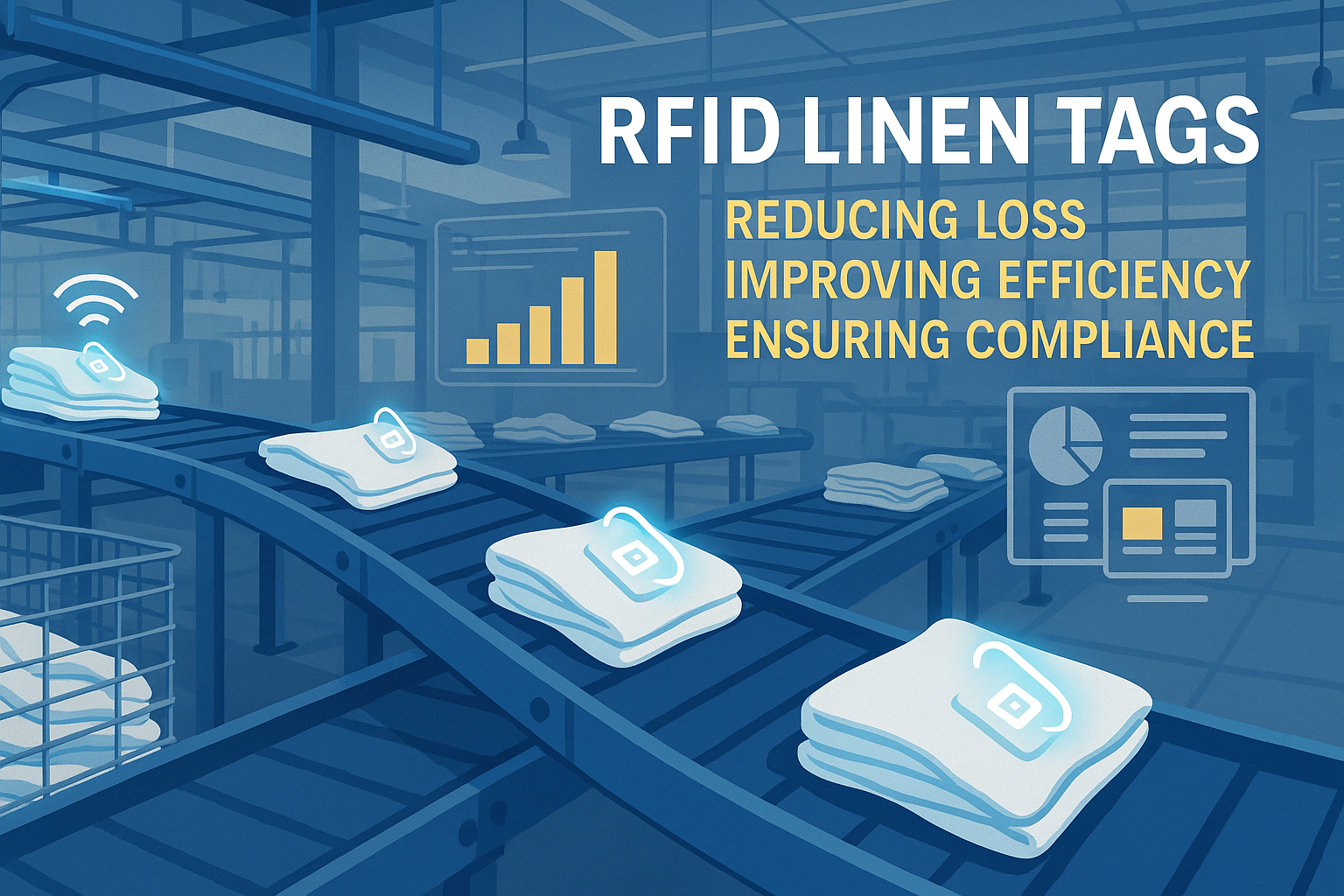
Die Vorteile von RFID-Wäscheetiketten in der gewerblichen Wäscherei
Die Verwaltung der Wäsche in Krankenhäusern, Hotels oder großen Wäschereien ist eine große Aufgabe. Jeden Tag werden Tausende von Laken, Handtüchern und Uniformen gewaschen, sortiert und zurückgeschickt. Aber Probleme wie verlorene Wäsche, Sortierfehler und manuelles Zählen können Unternehmen viel Geld kosten. So können mittelgroße Hotels durch fehlende Wäsche jedes Jahr über $200.000 verlieren.
Hier kommen die RFID-Wäscheetiketten ins Spiel.
Schlagwörter
VERWANDTE BLOGS

Was ist RFID-Abfallmanagement?
Stellen Sie sich eine Stadt vor, in der jeder Mülleimer spricht – nicht im wörtlichen Sinne, sondern über einen winzigen Chip, der dem System mitteilt, wann er voll ist, wann er geleert wurde und wohin er gebracht wurde. Genau das leistet heute die RFID-Abfallwirtschaft.

Was sind Schraubendichtungen und ihre Anwendungen? | Vollständiger Leitfaden
Im globalen Handel und in der Logistik spielen Bolzenplomben eine entscheidende Rolle bei der Gewährleistung der Frachtsicherheit und der Einhaltung von Vorschriften. Diese kleinen, aber leistungsstarken Geräte sind so konzipiert, dass sie Schiffscontainer, Anhänger und Frachttüren mit einem manipulationssicheren Mechanismus verriegeln.

Was ist eine RFID-Kartenschutzhülle? Vorteile, Anwendungsfälle und Kaufberatung
Die RFID-Technologie (Radio Frequency Identification) ist allgegenwärtig: in Ihren Kreditkarten, Ausweisen, Fahrkarten, Hotelzimmerschlüsseln und vielem mehr. Sie bietet Schnelligkeit und Bequemlichkeit, öffnet aber auch die Tür für eine neue Art des digitalen Diebstahls, das sogenannte "Skimming". An dieser Stelle kommt ein RFID-Kartenschutz ins Spiel.

